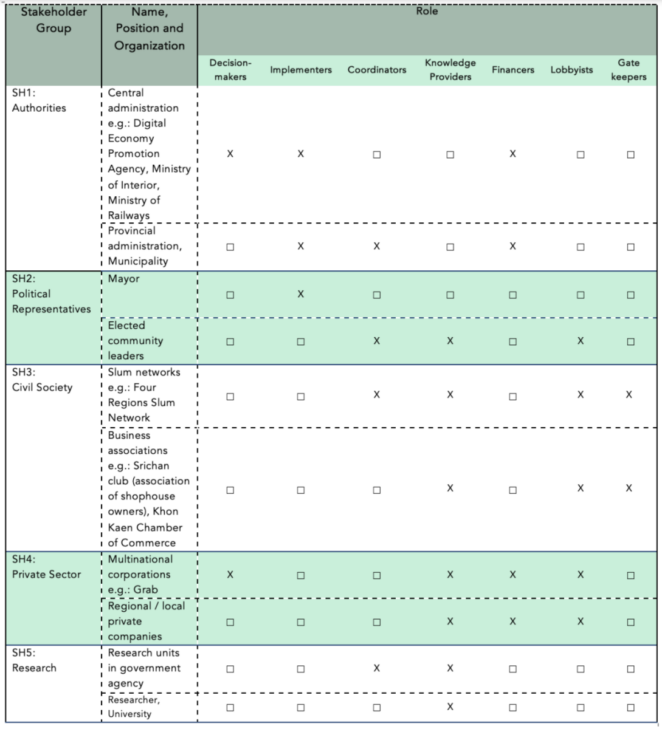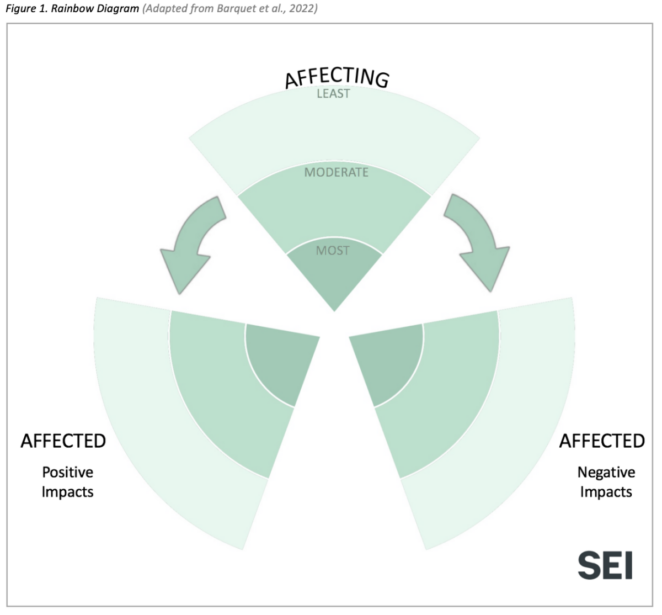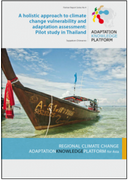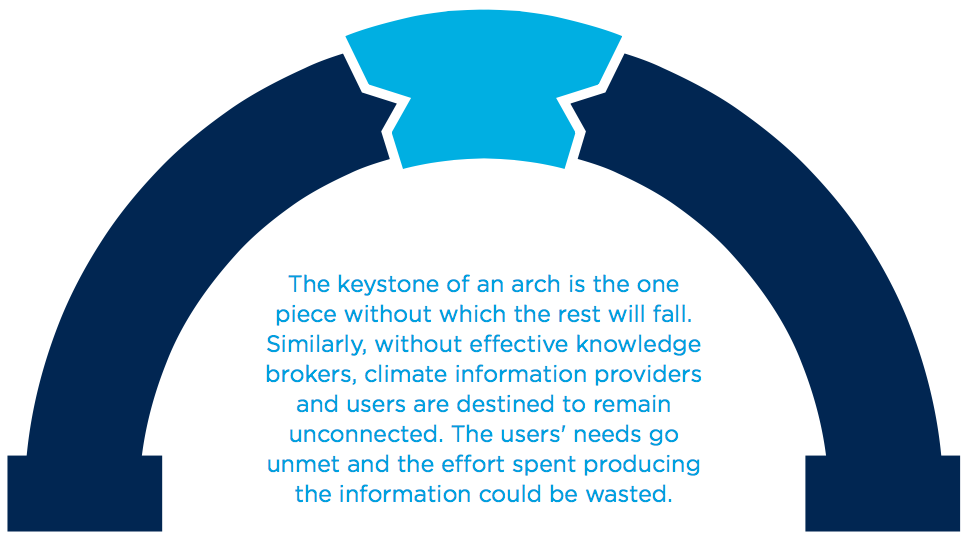Using MapStakes to increase the inclusivity of smart city planning in Khon Kaen, Thailand

This case study is part of the SEI Urban Toolbox for Liveable Cities which has been developed by the SEI Initiative on City Health and Wellbeing. The Urban Toolbox is a collection of tools, developed within SEI or in coordination with SEI, aimed at supporting planning and decision-making for improving the health, well-being and resilience of city residents and urban systems more broadly. It demonstrates how MapStakes can be used to increase inclusivity in urban planning.
Introduction
A model smart city project (SCP) has been in development in Khon Kaen city since 2016. The primary intervention of the SCP in Khon Kaen is a light rail mass transit project. In addition, a ‘smart block’, that targets area-based development in the central area of the city and ‘creative’ business revitalizations such as the setting up of co-working spaces and cafes, is also envisioned. Other interventions in the areas of traffic and waste management are also being planned.
The main goals of an inclusive smart city are to:
- Address and combat imbalances in development processes that exclude the interests of marginalized communities from the decision-making process.
- Ensure inclusive stakeholder engagements which challenge isolated and disconnected planning processes that excludes the interests of socially or economically disadvantaged groups.
- Proactively promote and prioritize the agency of those who may not benefit from technocratic development pathways.
- Mainstream gender equality into smart city agendas.
- Re-align the allocation resources and the direction of investment to support the land and livelihood rights of the urban poor.
To reduce the risks that occur when smart city plans fail to consider accessibility and inclusivity, this case study used the MapStakes approach to help engage with multiple and diverse stakeholders from the outset of the project. This is crucial because it can help urban planners to understand how certain interventions can either benefit or unintentionally exclude certain people groups.
*This Urban Toolbox case study is an abridged version of the original SEI report, which can be downloaded from the right-hand column. Please access the original text for more detail, research purposes, full references, or to quote text.
Methodology
As part of the SEI project ‘Entrepreneurial urbanisation and masculine identities in Khon Kaen, Thailand’, a range of interviews were conducted with key stakeholders. These included those from policy and business sectors; community leaders, truck drivers, home-based workers in informal settlements and shophouse owners. The interviewees were asked about their aspirations for urban development and occupational mobilities, shocks and stresses to their livelihoods arising out of rapid urban growth and adaptation mechanisms adopted by the urban poor to cope with rapid changes.
To achieve the objectives with smart cities (as well as other types of projects) it is necessary to involve the relevant stakeholders. In this toolkit, we build on the work by Barquet et al., (2022) that distinguishes three steps for engaging stakeholders: 1) Stakeholder identification; 2) Stakeholder mapping; and 3) Stakeholder involvement.
- Stakeholder identification – In a smart city project several different roles are potentially relevant, such as decision-makers, implementers, coordinators, knowledge providers, financers, lobbyists and gatekeepers.
- Stakeholder mapping – Table 1 shows an example of stakeholder mapping according to representation, adapted to the governance structure of Khon Kaen city. Notice how stakeholders only represent one group but may play different roles. A rainbow diagram (Burgers & Farida, 2015) can also help analyze the extent to which stakeholders a) influence the smart city development (e.g. decisions, structures, dynamics) and b) are influenced by the smart city development (e.g. control over resources and access to benefits) (Figure 1).
- Stakeholder involvement – this step is used to assess the level of involvement or participation required and desired by each stakeholder.


Suggested Citation
Adelina, C., Han, J.Y. and Segnestam, L. (2021). Enabling inclusion in smart city development: A policy toolkit. SEI report.




(0) Comments
There is no content